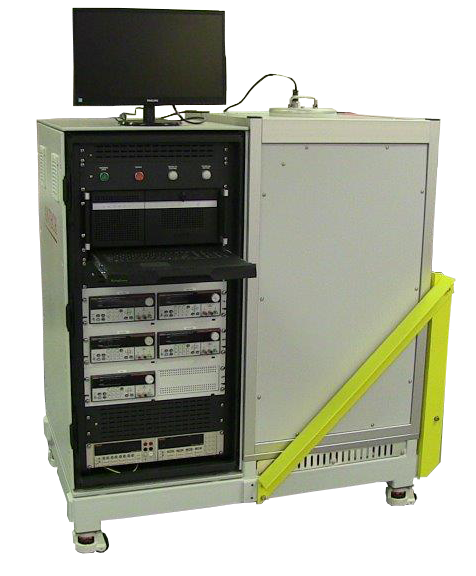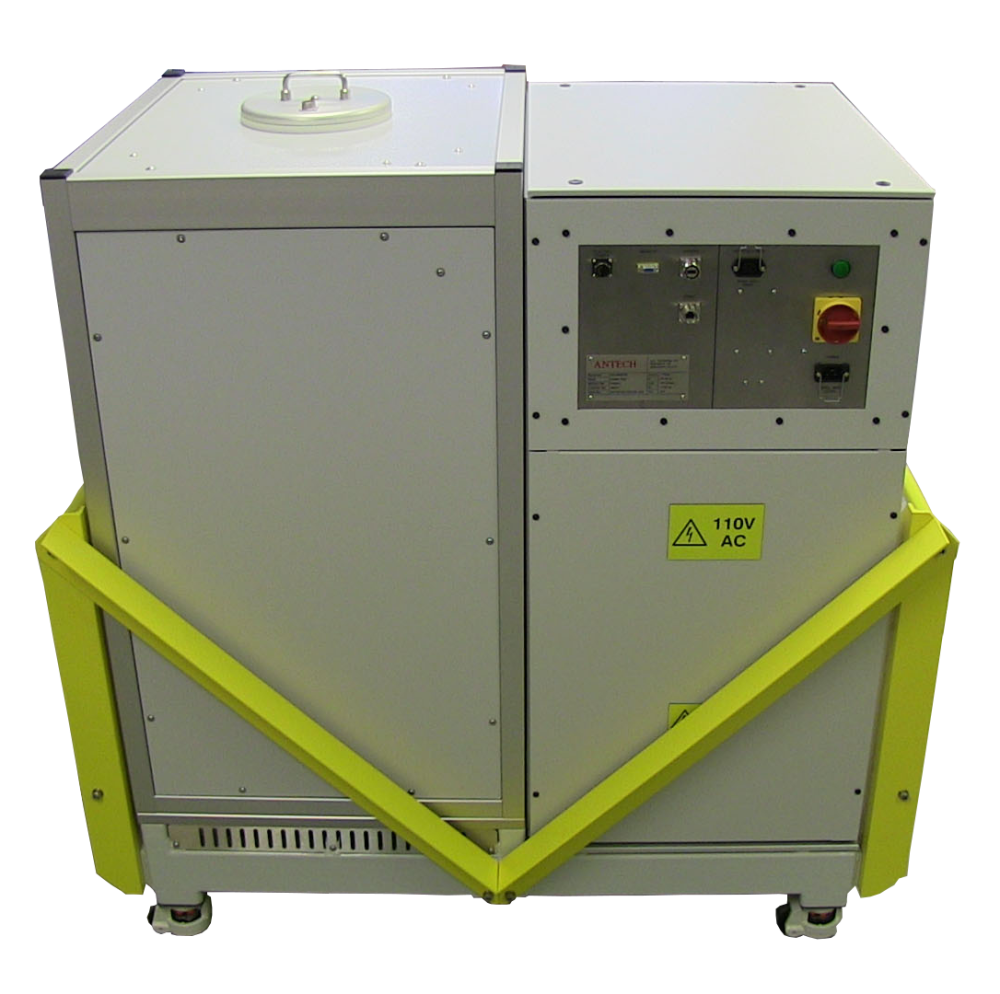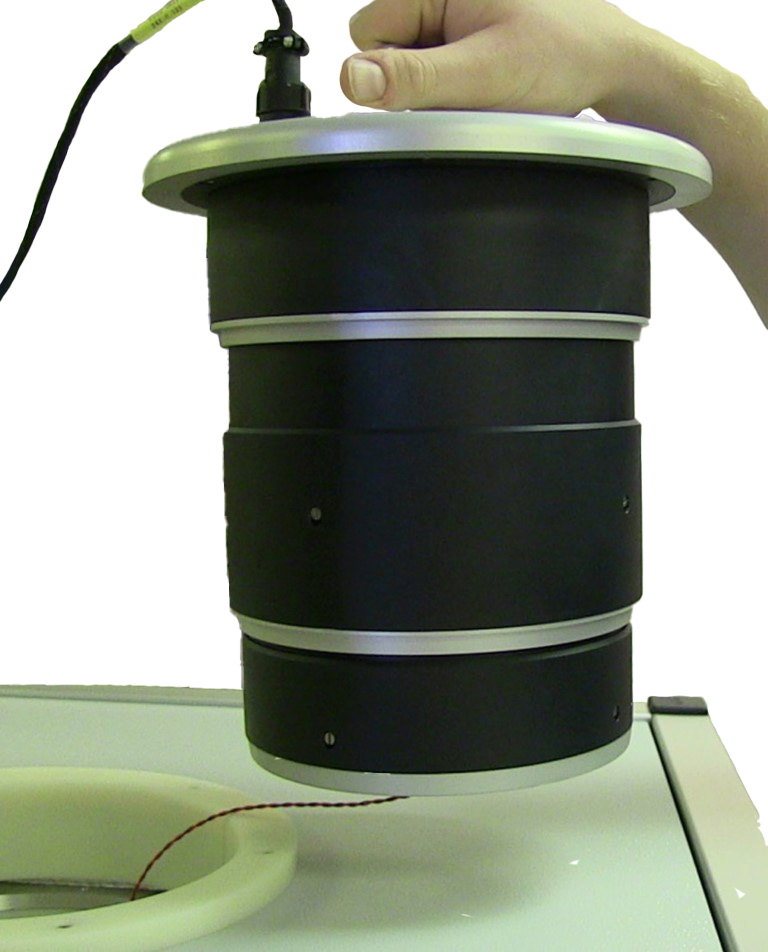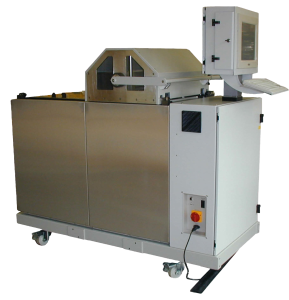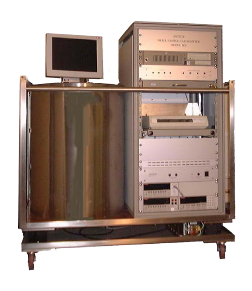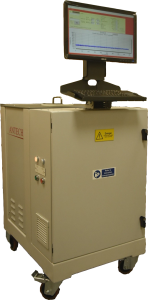The ANTECH CD285 Series Calorimeter systems are designed to measure the quantity of heat produced by tritium, plutonium and uranium samples in containers using the principle of isothermal or power difference mode of operation.
This system is applicable to a wide range of measurement scenarios including international safeguards measurements, shipper-receiver difference measurements and in-plant accountancy measurements. It can also be used for anomaly resolution in passive neutron coincidence counting or segmented gamma-ray scanning.
Four variants of the Calorimeter are available:
Model CD285-1540-5 for measuring individual canisters of up to 12.6cm (4.96”) diameter x 25.0cm (9.84”) high, including lifting fixtures.
Model CD285-1540-7 for measuring cylindrical canisters of up to 17.38cm (6.84”) diameter x 61.39cm (24.17”) high, including lifting fixtures
Model CD285-1540-10 for measuring cylindrical canisters of up to 25.27cm (9.95”) diameter x 77.47cm (30.5”) high, including lifting fixtures
Model CD285-1540-12 for measuring cylindrical canisters of up to 30.4cm (12”) diameter x 38.1cm (15”) high, including lifting fixtures.
- Custom designs available for different volume measurement chambers and detection sensitivities
- Comprehensive user friendly Windows based user interface software
- Elimination of requirement for water as a heat sink thereby reducing a potential criticality hazard
- Delivers an absolute measurement of sample thermal power
- Suitable for measurement of large Plutonium or Tritium samples
- Thermopile heat flow sensors provide enhanced measurement control sensitivity, hence improved detection efficiency and limit of detection
- Remote monitoring of measurement progress (where networking is permitted)
- Measurements approved for use by IAEA and WIPP
Benefits
- True Isothermal 'air bath' absolute measurements
- Automatic software algorithms for equilibrium sample power prediction and measurement end point determination
- Automatic plutonium and americium decay correction
- Large measurement chamber with a choice of four standard chamber sizes
- Highly efficient thermal insulation providing an excellent isolation from changes in ambient temperature
- Twin RAID drives for computer system back-up
- Networkable
- Configurable measurement chamber operating temperature and cylinder control parameters
- Custom designs available for different volume measurement chambers and detection sensitivities
Features
-
Description
The ANTECH CD285-1540 Calorimeter is designed to measure the quantity of tritium, plutonium or uranium in samples by determining the thermal power of the sample (W). It consists of a large volume single measurement chamber (thermal element) instrumentation enclosure and workstation mounted on a steel chassis fitted with castors. The thermal element contains the measurement chamber into which a canister containing the sample to be measured is placed. The measurement chamber is surrounded by layers of thermal insulation to reduce the effects of ambient temperature variation on the measurement.
The calorimeter operates on the isothermal (or power replacement) principle. It regulates the temperature of the three concentric cylinders which are surrounded by high performance insulation. This is in order to provide a stable environment around the measurement chamber, so that the sample being measured is isolated from the effect of fluctuations in the ambient temperature of the laboratory. An array of heat-flow sensors, installed between the outer surface of the inner cylinder and the inner surface of the middle cylinder, measure the heat-flowing from the inner cylinder to the middle cylinder. These sensors replace the traditional use of a nickel sense coil which is a resistive temperature sensor previously used to measure the temperature of the inner cylinder. The use of heat-flow sensors improves the accuracy of control of the inner cylinder. The sensors are wired in series and the heat-flux passing across them generates a voltage (the Seebeck effect) which is accurately measured and used to precisely control the temperature of the inner cylinder.
Particular attention has been paid to system performance through the design and selection of hardware for the thermal element, the insulation surrounding it and the measurement instrumentation. This is to meet the stability, sensitivity and minimum detectable activity requirements for the system.
The system control and analysis computer, high precision digital voltmeters and precision controlled power sources (also known as Precision Power Supplies) are housed in the instrumentation enclosure.
MasterCal user software operates under the latest Microsoft Windows platform and the instrument may be monitored and controlled over a network. The software includes data acquisition and data analysis functions. Measurement data is archived and may be re-analysed off-line.
-
Specifications
Sample SizeCD285-1540-5 126 mm Φ, 250 mm H
CD285-1540-7 174.1 mm Φ, 634 mm H
CD285-1540-10 252.7 mm Φ, 774.7 mm H
CD285-1540-12 304.6 mm Φ, 381 mm H CD285-1540-5 4.96" Φ, 9.84" H CD285-1540-7 6.85" Φ, 25" H CD285-1540-10 9.95" Φ, 30.5" H CD285-1540-12 12" Φ, 15" HMeasurement Range0.005 W to 12.5 W (extendable)Measurement TimeTypical <400mins (<720min for higher powers greater than 5W) MinutesPrecision<8% at 0.01W; <0.04% at 5W, <0.03% at 10W TypicalAccuracy<9% at 0,01W; <0.06% at 5W; <0.04% at 10W Typical

